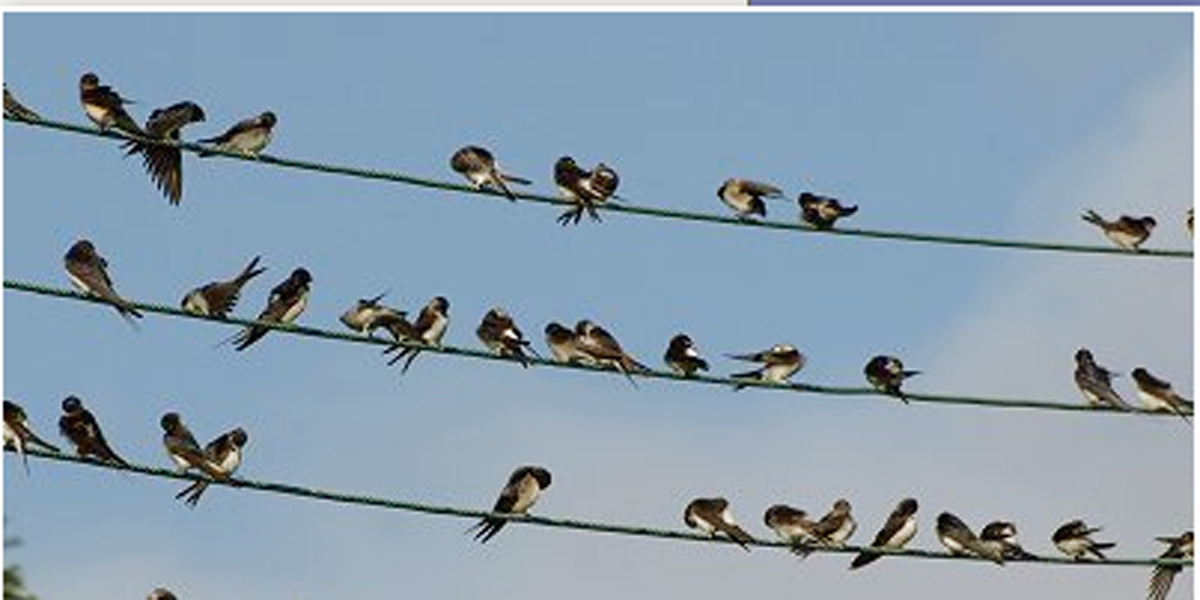You know summer’s over when there’s a clear, blue sky and the sun is beaming down – but there’s no heat. And that’s the way it always is as September turns into October – it gives us days that look great but don’t deliver.
In fact, they can be bad for our health. We look out the window, see the glorious sunshine and decide to give that cool T-shirt one more outing. Hours later and far from home, we’re shivering. Days later, we’re down with the cold.
It’s time to dig out the winter clothes. During the deep freeze at the start of the year, a panicking Dúlra bought a coat that must have been designed for life in the Arctic Circle. It's as hot as being under a quilt. It’s not the prettiest, grant it, but last winter, pretty could well have meant death. Fashion was parked as everyone shopped for practical clothes that did what clothes were meant to do from the beginning of time until, well, a few decades ago. Keep you warm.
Dúlra’s not quite ready to don the knee-high ski socks or the long johns he bought in a panic as the snow got deeper last year, but as he looks around nature, it’s clear that things are changing fast.
Our animals get their own winter clothes. The hares of Black Mountain change their light, summer coat for the thickest fur imaginable, with white patches to keep them camouflaged against the snow. Many birds get a new set of feathers for winter, like the starlings which are so bright that this common garden bird suddenly looks exotic. But most can’t change the number of feathers they have and the price they must pay is suffering through the hot summer with the same number of feathers that will see them through winter.
Birds’ feet are the one great weakness. Their feet have cold-resistant scales rather than feathers, but it’s only of limited help when they are in constant contact with the freezing earth. Ducks often stand on one leg to limit the cold coming up through their legs, while smaller birds puff up their feathers to cover their feet when they get a chance.
And that’s exactly how the flock of swallows was which lined the phone lines at Dundrod this week. There were about 40 in total, all in a row. Most had their feathers puffed out, trying to protect their baldy feet.
They’ve enjoyed an exceptional summer, but their food supply has been suddenly turned off like a tap. The thousands of insects that they need every day are so much harder to find, and the time required to fill a belly now means they don’t get much rest.
The birds on the line at Budore Road were the parents and youngsters from all the farms around. Every year, they gather as if to give each other courage for the big flight ahead, across the Mediterranean and over the Sahara desert to the southern tip of Africa – a full 6,000 miles. They were chattering away as Dúlra focused his binoculars, like they were going through the details of the journey ahead. Probably, like us, talking about how bloody cold it is.
They’ll do that for another week, before taking the plunge. It’s a sad day for the farms and homesteads around Hannahstown and Dundrod when the swallows, fáinleog in Irish, bid farewell and disappear over in one big flock towards the Mournes. They’ve left us to our lot.
We know then that it’s time to reach for the winter coat.
What you say:
I’ve Japanese knotweed growing in the waste ground at the back of my house and I’ve contacted Lisburn council about it but I’ve been sent from pillar to post.
Reader, Areema.
I’ve Japanese knotweed in my yard. I tried the council but they won’t help. What can I do?
Reader, Oakvale.
Dúlra writes: There’s no official help for getting rid of this alien plant that can quickly grow to three metres tall and damage foundations, making selling a home difficult. Eradicating it is costly – it doesn’t react to ordinary weedkillers. One report says getting rid of it requires “steely determination”. It can cost thousands of pounds and about three years to kill it with chemicals – injections are given directly into the stems. Japanese knotweed isn’t dangerous to our health so our councils focus on getting rid of other alien species like giant hogweed. If you have internet access, there’s good advice on how to zap it on invasivespeciesireland.com.
If you see any interesting animals or birds, or have any questions, you can text Dúlra on 07801 414804.






